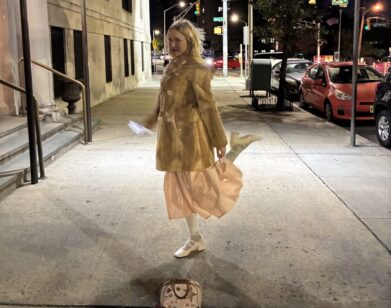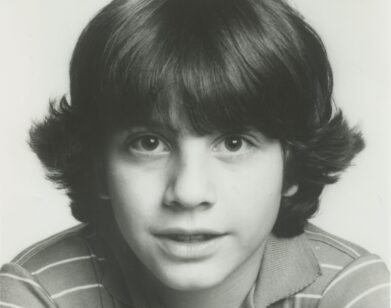Photographer Paige Powell on Entering Andy Warhol’s Inner Circle and Never Looking Back
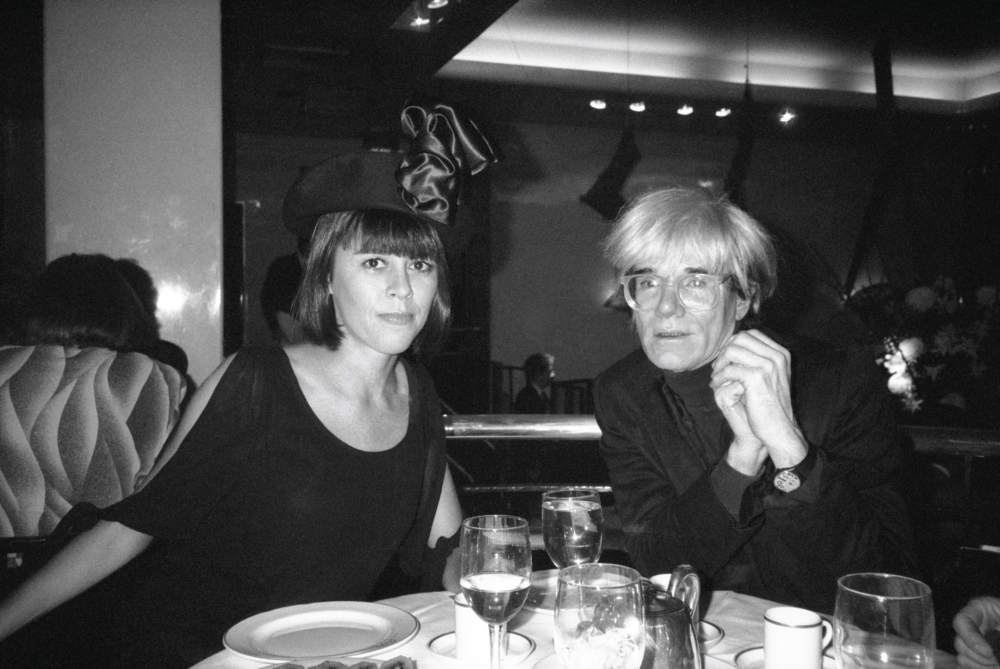
Paige Powell with Andy Warhol.
Once upon a time, in the disco ball-refracted distant past of 1980, a girl from Oregon headed to New York City with dreams of bumping elbows with Andy Warhol and Jean-Michel Basquiat. Her wish came true — and with flying colors. She would soon become an advertising associate and later, an associate publisher, of Interview Magazine, then under Warhol’s watchful, and always sardonic, eye. (She would also go on to date Basquiat.) This is the true story of Paige Powell, whose effervescent black-and-white photos of Indochine dinners and high-flash polaroids of scattered magazine pages in the Interview office have never been collected comprehensively, until now. A new trio of books, published by Dashwood in collaboration with Gucci, spotlights Powell’s photos from the early Interview days during 1984-1992 as part of Andy Warhol’s cadre of downtown characters. In Artists Eating, there’s a table with Debbie Harry, Stephen Sprouse, and LaTasha Jordan forking peas. In Animals, Powell poses with a Dalmatian (she was a former employee of the Oregon Zoo who taught chimpanzees sign language) and lets Steven Klein’s pig scavenge the dishwasher. With Beulah Land, she collects photos from her show at the East Village art bar, which documents the raucous inner sausage-making of the magazine. Currently, her photos can be seen on display in Gucci’s Wooster Street flagship store. Powell spoke to Interview about Basquiat’s ice cream cones, Warhol’s oranges, and how it all started with elephant manure.
———
SARAH NECHAMKIN: How did you get started at Interview?
PAIGE POWELL: I’m from Portland, Oregon, and some friends of mine there subscribed to Interview Magazine. I just thought it was so beautiful — it had this kind of raw, very porous paper, and it had all these different people I hadn’t heard of before. Like, young people. The interviews were amazing — the ones that Andy did. He was so interested in advertising, and I loved looking at the credits at the bottom of his photographs, what shoes they were wearing, what socks they were wearing, what fragrance they were wearing. I just loved the magazine. I wanted to work for it. If I was going to move here, it had to be for something really special about New York, New York. So I literally went and knocked on the door.
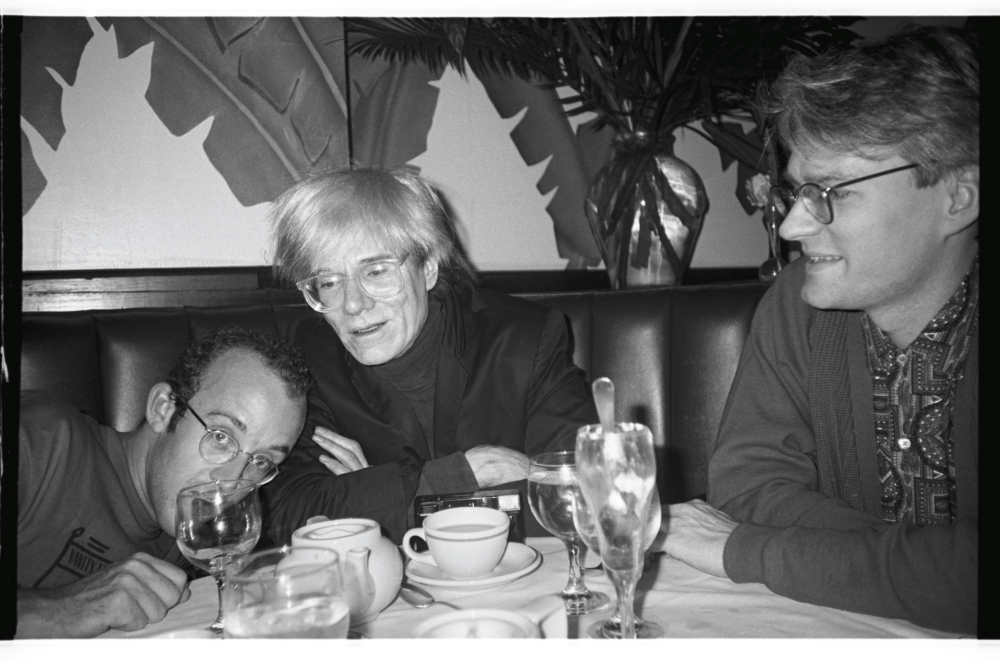
Keith Haring, Andy Warhol and Doctor Barry Gingell.
NECHAMKIN: Where were the offices back then?
POWELL: 860 Broadway, right off Union Square. And it was really scary back then, there were daily shootouts. This was 1980. It was serendipitous that one of Andy’s technical assistants opened the door for me because they had this bulletproof glass door, and glass windows, and it was right after a deadline, so he asked me, “Who are you here to see?” And I said “Oh, um… I came to apply for a job at Interview.” There were only like eight people working at Interview at the time. I was like, “I would like to do interviews.” And they go “Oh, no. We don’t do them. Andy does them.” Then they go, “Where are you from?” I told them I was from Portland, Oregon, and they started laughing. They looked at each other and said, “Have you been to Portland?” They were fascinated. They said they were thinking about hiring someone to sell and asked me if I had ever sold anything. I was the public affairs director for the zoo in Oregon, and I was also a volunteer there. I taught chimpanzees sign language. Part of my job was editing a magazine and promoting elephant manure. It was a breeding zoo, so we were taking in a lot of animals where the parents had been poached or the mother was killed by a car. No one else was going to take them, so in a way they were doing the best that they could. So they said to me when I applied, “If you can sell elephant manure, you can sell ads for Interview Magazine.” And I was hired.
NECHAMKIN: How involved were you with distribution? I know Andy used to toss copies around the city.
POWELL: At the time it was called Andy Warhol’s Interview Magazine. I think the magazine, and the camera, felt like a shield to him, because he had been shot in the 60s and he was shy. He just loved giving it out on the street. It was like disposable art. He loved advertising — business and art. I learned a lot about business from him. It wasn’t the same thing then. People didn’t work to make money. They worked because they wanted to do their passion. But now, it’s different. They didn’t have all these people around celebrities, the way it is now. I could go anywhere with Andy, and a lot of people didn’t even recognize him. If they did, they kind of left him alone. Now, a lot of people can’t do that. There weren’t computers or anything like that. We were all pen and pencil. And because of that, it had to be very personal. Your voice. At that time, we didn’t know it was a special environment, but I knew it was special because I was around other creatives that I really liked.
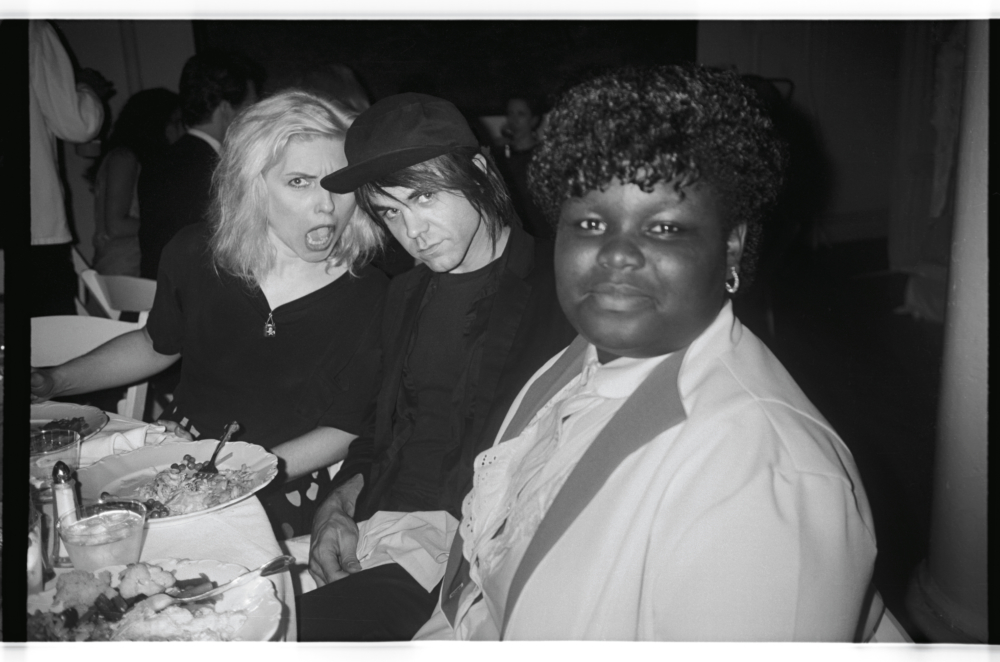
Debbie Harry with Stephen Sprouse and LaTasha Jordan.
NECHAMKIN: How did you see the magazine change over time?
POWELL: It changed like eleven sizes by the time it was 1990. We kept changing sizes because the newsstand would say people aren’t gonna buy it because it’s not gonna fit in. I loved that the paper was newspaper-like, matte and porous. There’s more grain in the paper and when you put ink into it, if it’s black and white it’s stronger because the dot gain is higher. It’s not too precious. It’s egalitarian.
NECHAMKIN: Who was your favorite subject to photograph?
POWELL: Well, I had quite a few. Andy was around me all the time, and Jean-Michel [Basquiat] when we were in a relationship. There was my friend Tama Janowitz, and Kenny Scharf. It was neighborly. We always did things together. We would had these lunches at 860 Broadway where we’d just mix people up. Maybe there’d be a couple big art stars, maybe dancers, musicians, opera singers, some advertisers. It was always a mix.
NECHAMKIN: What was your impression of Jean-Michel [Basquiat]? How did you start dating?
POWELL: We started dating around ‘82. He wanted to date me earlier but I wanted to be professional about it. He had asked Andy if he could marry me, and Andy told him he could marry me so long as I kept working at Interview. Jean-Michel, he was a really special person. His group was very raw and raging and poetic, but he was a really sweet person, too. Everything was over the top with him. He’d come to the house with like a tray of ice cream, scoops on scoops. Like the Leaning Tower of Pisa, like maybe six of them in all these different colors and they were all kind of melting together and dripping down. He did that a lot. We’d go see a movie, he’d go out and get the ice cream. He’d peep over the peephole with his ice cream cone. He just kind of went for it. He was unaware of material.
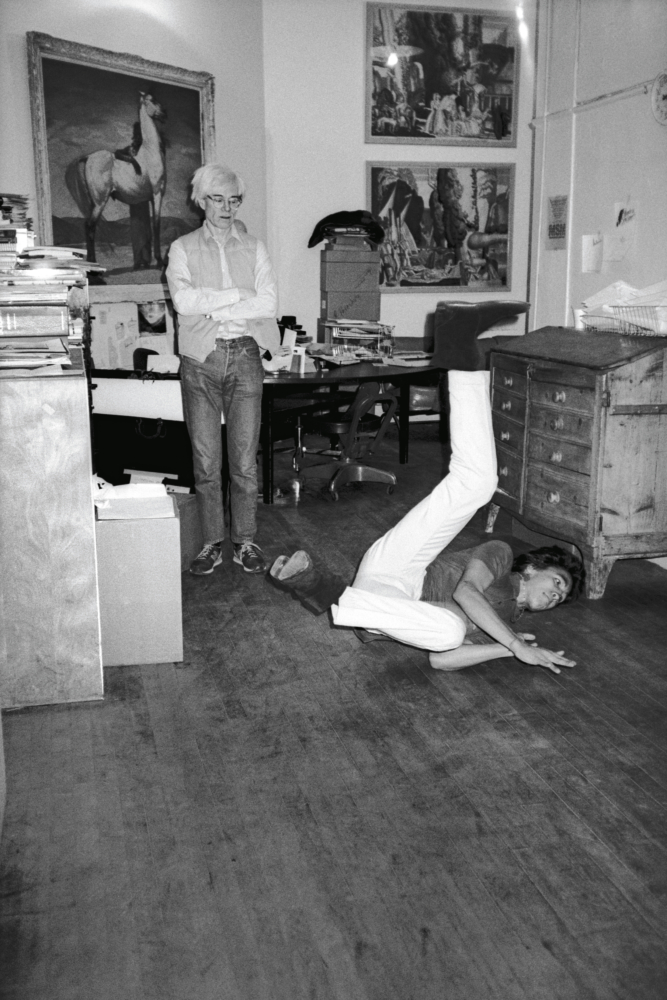
Andy Warhol and artist/breakdancer Doz Green at the Interview office on 860 Broadway.
NECHAMKIN: Do you have a favorite Andy story?
POWELL: I learned a lot about business from Andy. He could always get me seats for everything. One day in the summer, the two of us went to the studio at 860 Broadway and he said, “I’d love to include some oranges for a shoot.” I said, “That’s a good idea, I’ll go across the street and get a batch of oranges.” And he said okay, “Let me get you some money.” I felt bad. I could pay for the oranges. I bring the oranges back and he immediately says to me, “Where’s the receipt?” And I go, “What do you mean, a receipt?” He goes, “You always have to get a receipt.” I said “Why? Andy, it’s just some oranges.” And he’s like, “You can write it off.” And I go, “What do you mean you can write off a bag of oranges?” He said, “Well, it’s a still life. We take the pictures and then squeeze the oranges.” He was right about that.



